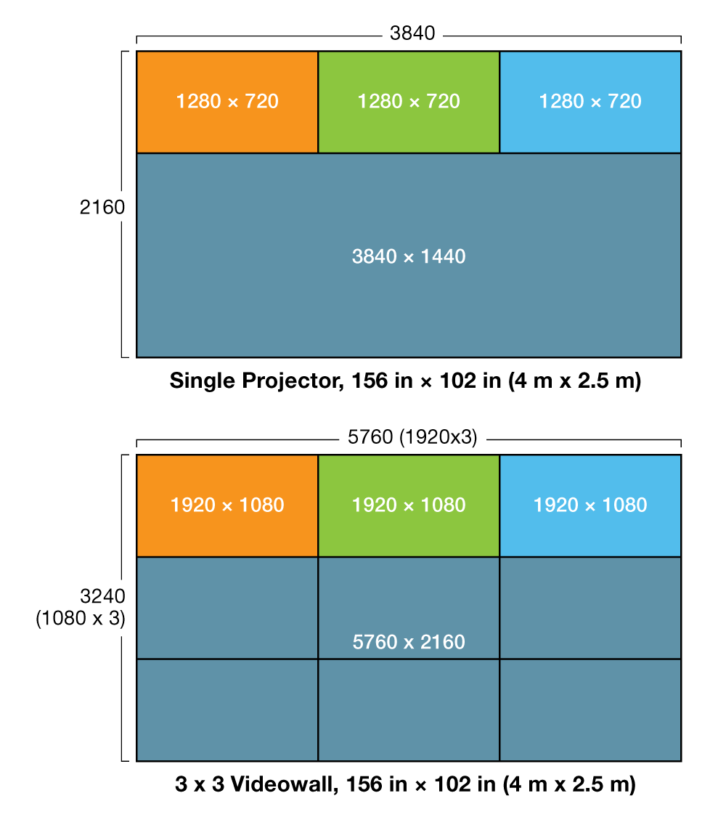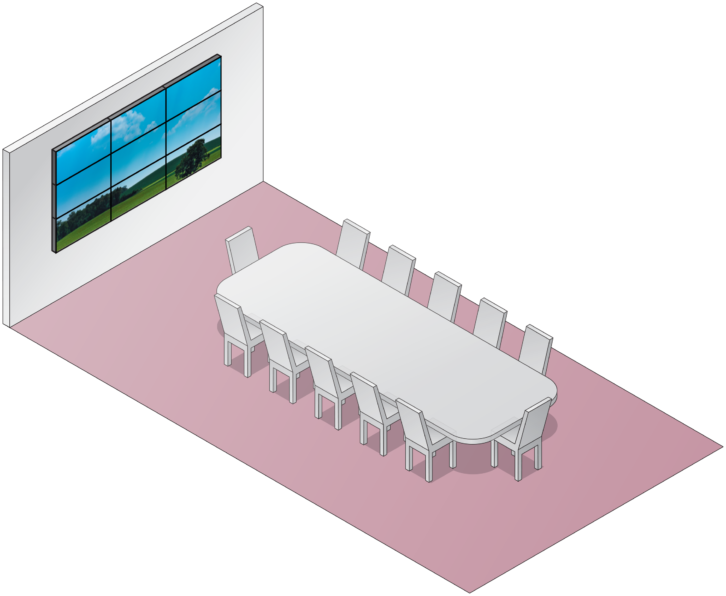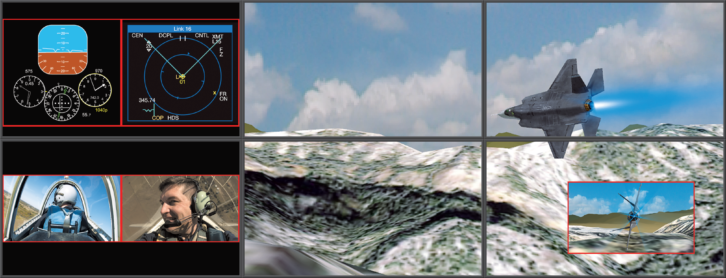
A videowall typically requires a significant investment and is often the most expensive line item in a facility’s capital outlay for an AV project. While the videowall functions as a single display, it is always important to remember that it is a system. Videowall processors are a significant component of the videowall in terms of cost. They provide features common to conventional scalers or video signal processors but have greater input, output, and processing capability. The increased number of inputs and outputs creates diverse requirements for processing and image enhancements, providing greater value.
Because of the investment necessary to acquire and install a videowall, an inexperienced designer may be tempted to seek an alternative means of presenting large images or multiple sources simultaneously. This could include increasing picture size from a single projector, using conventional signal switching and distribution in place of a videowall processor or installing independent LCD panels on a wall instead of an integrated videowall array. However, videowalls have several distinct attributes and advantages. The image display capability and flexibility of a videowall simply cannot be duplicated.
High Pixel Density
Pixel density is the number of pixels per unit area and is determined by the resolution and screen size of a display. When a single projected image is enlarged, pixel density decreases. With a videowall, pixel density is constant regardless of the array size because it is based on the individual display device. Enlarging the array increases the overall resolution of the videowall. A videowall usually delivers much higher pixel density than a projected image of the same size. An image can be upscaled for enlargement on a videowall so that it fills up the array without compromising picture quality. In contrast, significantly enlarging an image from a projector reduces apparent brightness, resolution and image quality
Images that occupy large viewing areas need sufficient resolution or pixel density in order to present clear and legible content. Figure 1-1 illustrates two images of equal size. One is from a single 4K projector fed by a multi window processor and the other a 3×3 videowall with 1080p panels via a videowall processor. Both are presenting the same content and layout for displaying multiple high-definition input sources. The videowall presents the sources with twice as many pixels when compared to the single projected image. This increased resolution, resulting from a higher pixel density, enables presentation of a row of three 1080p video sources at full resolution, compared to just 1280×720 per image for the single display.
Creativity with Display Shapes and Sizes
A videowall is created by “tiling” multiple display devices together. By tiling displays, videowalls of any size and aspect ratio can be constructed in very creative ways. Its canvas layout never has to be limited to the standard aspect ratios of single displays. Displays in a videowall can be oriented horizontally, vertically, or even a combination of both, further enhancing the creative possibilities.

Small Footprint
A front projector usually requires significant throw distance to produce an image that fills up a substantial portion of a wall. Practical throw distance may limit the number of allowable participants in the room without blocking the projected image. This is true even when special wide-angle lenses are used.
Videowalls comprised of flat panels, LED panels, or projection cubes occupy a compact footprint due to each display’s fixed depth. This depth remains constant no matter how large the videowall canvas may be. A display array of any size shares the same depth of a single display device. (See Figure 1-2)
Consistent Brightness and Contrast
A bright, clear image is crucial for a video display. Whether being viewed by a workforce interpreting on-screen information or by customers casually glancing at digital signage in a retail environment, images must be sufficiently bright so that content is clear and easy to decipher.
Videowalls present viewers with consistently bright, inviting images, regardless of size. While a single projector loses brightness and contrast as image size increases, there is no reduction in either as more displays are added to a videowall. A videowall with 40 screens is just as bright as a videowall with four screens, with consistent contrast delivering deep, rich blacks even in the highest ambient light environments.
Show More Images on Fewer Displays

Most flat panels have internal scalers that allow a single image to be stretched across a tiled array. This may be suitable for applications that only use videowalls for displaying a single, large image. For applications requiring simultaneous presentation of multiple image sources, a simple solution is to feed sources directly to individual displays in the videowall. A switcher, distribution amplifier, or matrix switcher can be used to provide some flexibility in distributing signals to the displays.
However, with this solution, the number of sources that can be presented is limited by the number of displays in the videowall. For example, a 2×2 videowall with a matrix switcher allows for simultaneous display of only four image sources.










